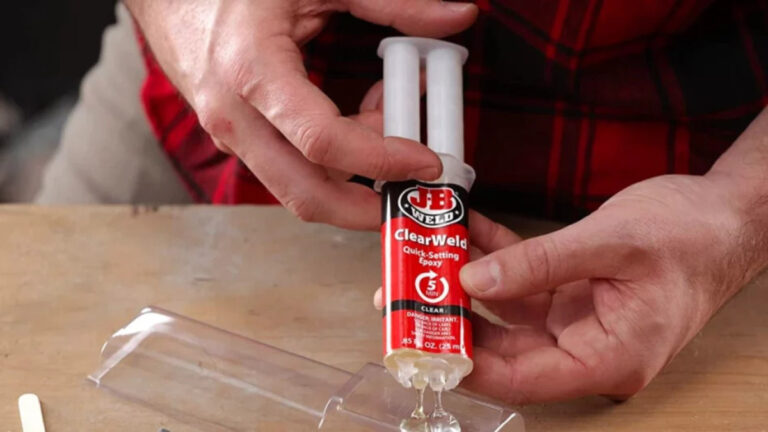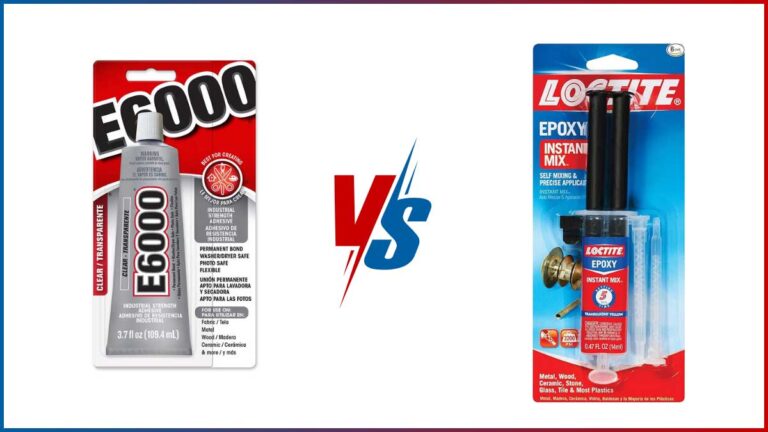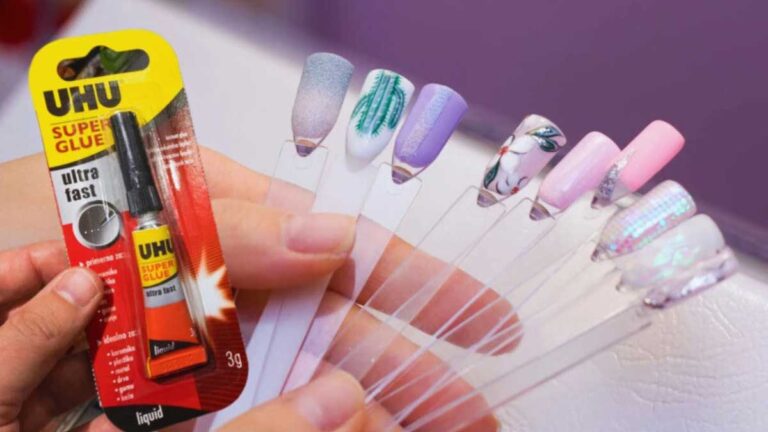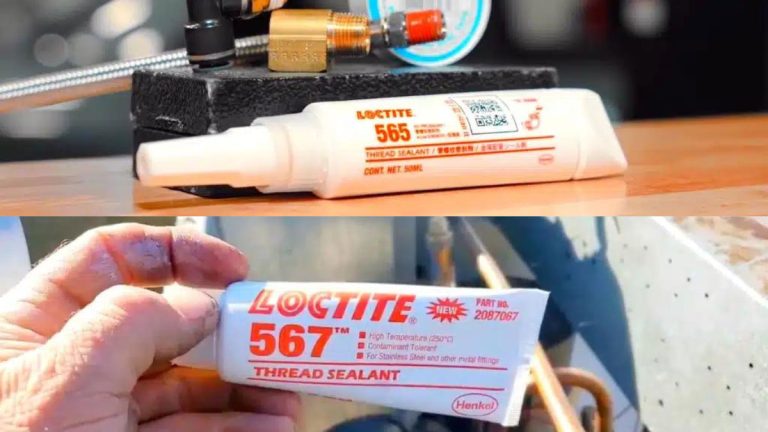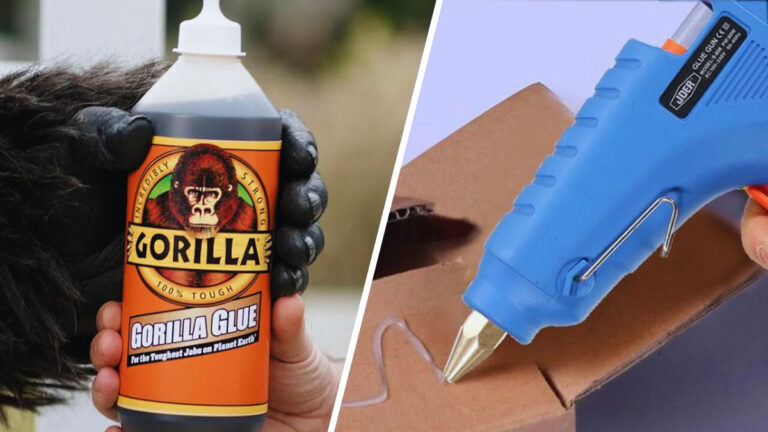Can Silicone Sealant Be Used as an Adhesive? Find Out How
When you’re tackling a home improvement project, finding the right materials can make all the difference. Silicone sealant, known for its flexibility and durability, often comes to mind. But can it double as an adhesive?
You might be surprised to learn that silicone sealant isn’t just for sealing gaps and joints. Its strong bonding properties make it a versatile tool in your DIY arsenal. Whether you’re fixing a broken item or securing materials together, understanding how silicone sealant works as an adhesive can save you time and money.
Key Takeaways
- Versatility: Silicone sealants can be used as adhesives, providing strong bonds for various materials such as metal, glass, ceramics, and plastics.
- Flexibility and Durability: Known for their elasticity, silicone sealants can accommodate movement and vibrations while resisting weathering, UV light, and harsh conditions, making them ideal for both indoor and outdoor applications.
- Preparation and Application: Proper surface cleaning, drying, and adhering to application guidelines can enhance the bond strength of silicone sealants used as adhesives.
- Common Uses: Silicone sealants are widely used in household tasks like bathroom and kitchen repairs, as well as in industrial applications such as automotive, electronics, construction, and aerospace.
- Limitations: While silicone sealants offer flexibility and weather resistance, they may not provide the high tensile strength needed for rigid, load-bearing applications. Always consider the project requirements before choosing silicone sealant as an adhesive.
What Is Silicone Sealant?
Silicone sealants are a type of adhesive and sealant made from silicone polymers, particularly polydialkylsiloxanes like polydimethylsiloxanes (PDMS). Known for their unique properties, silicone sealants are versatile and durable, making them ideal for various applications.
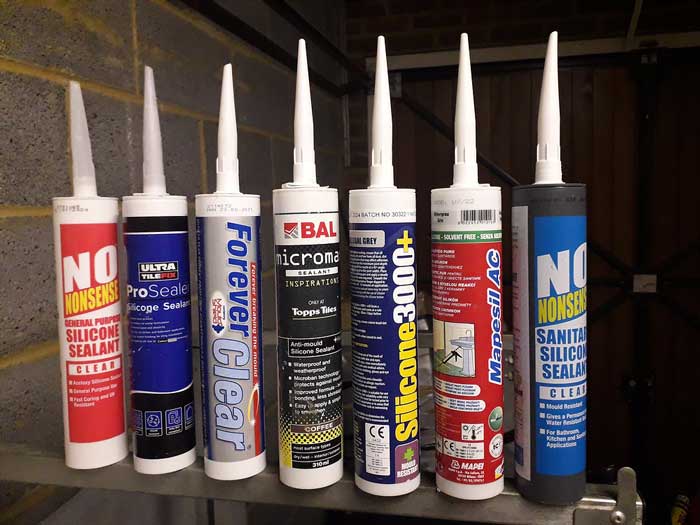
Chemical Structure
Silicone Polymers: These consist of a backbone of silicon and oxygen atoms, with organic groups like methyl, phenyl, or vinyl attached to the silicon.
Polydialkylsiloxanes: These include polydimethylsiloxanes (PDMS), which give silicone its unique properties.
Key Characteristics
Silicone sealants are distinguished by these primary characteristics:
- Flexibility: Silicones maintain elasticity even under extreme temperatures and mechanical stress.
- Durability: Resistant to weathering and UV light, these sealants have a longer lifespan.
- Adhesion: They adhere effectively to various substrates, including metals, glass, and plastics.
Mechanical Performance
Silicones exhibit several beneficial mechanical properties:
- Elasticity: Maintains shape after stretching or compressing.
- Modulus: Stiffness of the sealant, measured under stress.
- Movement Capability: Can accommodate significant movement without losing adhesion.
Applications
Silicone sealants are suitable for numerous applications:
- Automotive: Used in engine gaskets and to seal windshields.
- Construction: Applied in glazing, curtain walls, and weatherproofing.
- Electronics: Acts as a protective coating for sensitive components.
- Household: Commonly used for plumbing, sealing sinks, and bathtubs.
| Property | Description |
|---|---|
| Elasticity | High, retains shape after deformation |
| Temperature Resistance | Operates effectively from -75°F to 500°F |
| UV Resistance | Excellent, withstands prolonged UV exposure |
| Adhesion | Sticks to metals, glass, plastics |
| Longevity | Remains effective for more than 20 years |
Silicone sealants are invaluable in various industries, offering flexibility, durability, and strong adhesion. Understanding their properties and applications can guide you in selecting the right sealant for your projects.
Difference Between Silicone Sealants & Adhesives
Understanding the difference between silicone sealants and adhesives helps you choose the right product for your project, ensuring optimal results. Both materials serve distinct purposes and have unique properties.
Strength & Form
- Silicone Sealants:
- Primarily used for sealing gaps and joints, preventing air, water, and moisture infiltration.
- Known for their flexibility, which allows them to withstand movement and vibrations.
- Offer superior elasticity and durability across a wide range of temperatures but have lower tensile strength compared to adhesives.
- Silicone Adhesives:
- Designed to bond materials, providing strong and durable bonds.
- Often used in applications requiring high adhesion strength, like medical devices, electronics, and structural bonding.
- Generally possess higher tensile strength than sealants, but may lack the flexibility and movement accommodation sealants offer.
Components
- Silicone Sealants:
- Comprise silicone polymers like polydimethylsiloxane (PDMS).
- Include fillers, plasticizers, and curing agents to enhance properties.
- Exhibit high resistance to weathering, UV radiation, and extreme temperatures.
- Silicone Adhesives:
- Also built from silicone polymers, but with additional components to boost adhesive qualities.
- Use curing agents that promote strong bonds with various substrates.
- Typically, incorporate additives to improve mechanical strength and chemical resistance.
- Silicone Sealants:
- Ideal for sealing applications where flexibility and movement accommodation are critical.
- Commonly used in building construction, automotive sealing, and electrical insulation.
- Provide long-lasting seals that maintain integrity even though environmental changes and stress.
- Silicone Adhesives:
- Suited for bonding applications that demand high adhesion strength and durability.
- Used extensively in industries like electronics, medical device manufacturing, and structural engineering.
- Ensure strong bonds between different materials, including metal, glass, and plastics.
Understanding these differences helps you select the right product for your specific needs. Sealants offer flexibility and sealing capability, while adhesives provide strong, durable bonds. Knowing these distinctions can optimize your project’s performance and longevity.
Advantages of Using Silicone Sealant as an Adhesive
Silicone sealant offers several advantages when used as an adhesive in specific scenarios. While not always the first choice for high-strength bonding, it brings unique benefits to the table, especially when flexibility and environmental resistance are crucial.
Versatility
Silicone sealants are adaptable and valuable for numerous applications.
- Wide Range of Materials: They bond well with a variety of substrates, such as metal, glass, ceramics, and plastics. For example, it’s effective for sealing around window frames, plumbing fixtures, and automotive parts.
- Flexible Bonding: The sealant remains flexible after curing, accommodating movement and vibration. This makes it suitable for dynamic environments, such as boat building or car assembly, where materials might expand or contract.
- Weather Resistance: They perform well under various environmental conditions, including UV exposure, high temperatures, and moisture. This is critical for outdoor projects like sealing exterior joints or repairing roof tiles.
- Chemical Resistance: Silicone sealants exhibit high resistance to chemicals, oils, and solvents. This property is beneficial in industrial settings, where exposure to harsh substances is common, such as in chemical processing plants.
Durability
Long-lasting performance is a hallmark of silicone sealants used as adhesives.
- Longevity: Silicone sealants can last over 20 years, maintaining their properties without significant degradation. This durability ensures long-term bonding and sealing, reducing the frequency of repairs.
- Elasticity: The elastic nature of silicone allows it to stretch and compress without losing adhesion, which is crucial for materials subject to thermal expansion and contraction. For instance, it’s ideal for bonding components in HVAC systems.
- Shrink Resistance: Unlike many other adhesives, silicone sealants have minimal shrinkage when cured, preserving the integrity of the bonded materials. This characteristic is essential in construction projects requiring precision, such as installing glass panels.
Key Terms
- Substrate: The underlying material to which a sealant or adhesive is applied.
- Cure Time: The period it takes for the sealant to set and reach its full properties.
- Elasticity: The ability of a material to return to its original shape after deformation.
Examples of Applications
| Application | Benefits |
|---|---|
| Window Frames | Flexible bonding, UV resistance |
| Plumbing Fixtures | Water resistance, long-lasting seal |
| Automotive Parts | Vibration absorption, chemical resistance |
| HVAC Components | Elasticity, shrink resistance |
| Roof Tile Repairs | Weather resistance, durability |
Summary
Using silicone sealant as an adhesive provides versatility and durability in many applications. Understanding its strengths can help you choose the right product for specific needs, ensuring long-term performance and reliability.
Limitations of Using Silicone Sealant as an Adhesive
Silicone sealant offers versatility in various applications, but it also comes with certain limitations when used as an adhesive. Understanding these limitations can help you make informed decisions for your projects.
Bonding Issues
Silicone sealant’s primary role is sealing rather than bonding. Its strength lies in flexibility rather than rigidity, resulting in weaker bonds compared to other adhesives.
- Flexible Bonds: Provides elasticity but may lack the structural strength required for heavy-duty applications.
- Compatibility: Not suitable for every material; alternatives like MS polymer sealants offer stronger bonds.
- Performance: Ideal for applications needing movement accommodation, but less effective for rigid, load-bearing bonds.
Application Conditions
Applying silicone sealant effectively requires attention to conditions impacting its performance. While it needs minimal preparation, neglecting surface cleaning can compromise the bond strength.
- Surface Preparation:
- Clean the surface thoroughly to remove dirt, oil, and debris.
- Ensure the surface is dry before application to improve adhesion.
- Application Environment:
- Optimal temperature range for application is between 40°F and 100°F.
- Avoid applying in extremely humid or wet conditions to ensure proper curing.
Summary
Understanding the limitations of silicone sealant as an adhesive is crucial. While it offers flexibility and ease of application, it’s not the best choice for high-strength bonding tasks. Always clean surfaces thoroughly and consider the conditions under which you’re applying the sealant. For applications demanding significant strength, explore other adhesive options to ensure optimal performance.
Best Practices for Using Silicone Sealant as an Adhesive
Silicone sealant’s versatility makes it an excellent choice for various bonding applications. Understanding the best practices for using it as an adhesive ensures strong, durable bonds.
Surface Preparation
Proper surface preparation is crucial for achieving strong adhesion with silicone sealant.
- Cleaning the Surface: Ensure all surfaces are clean and free from dust, grease, and other contaminants. Use a mild detergent or solvent like isopropyl alcohol for cleaning.
- Drying: Allow the surfaces to dry completely before applying the sealant. Moisture can prevent proper adhesion.
- Roughening: Lightly sand smooth surfaces to increase bonding strength.
Application Techniques
Correct application techniques optimize silicone sealant’s performance as an adhesive.
- Follow Instructions: Adhere to the manufacturer’s guidelines for application. Different products may have specific instructions.
- Use a Caulking Gun: For consistent and precise application, use a caulking gun to dispense the sealant.
- Apply Evenly: Ensure an even layer of sealant on the bonding surface.
- Press Firmly: Press the materials together firmly to ensure good contact.
Drying and Curing Time
Understanding drying and curing times ensures the bond reaches maximum strength.
- Initial Drying: Silicone sealant typically forms a skin within 30 minutes. But, this can vary based on product specifications and environmental conditions.
- Full Cure: Complete curing usually takes between 24 to 48 hours. Ensure the bonded materials remain undisturbed during this period.
- Optimal Conditions: Maintain ideal temperature (50-100°F) and humidity (40-60%) to accelerate the curing process.
Summary
Implementing these best practices will enhance the effectiveness of silicone sealant as an adhesive, resulting in robust and long-lasting bonds. Use these guidelines to achieve professional results in your projects.
Common Applications for Silicone Sealant as an Adhesive
Silicone sealant can function as an adhesive in numerous applications, combining strong bonding capabilities with flexibility and durability. Below are some common uses in both household and industrial settings.
Household Uses
Silicone sealants offer practical solutions for various household tasks. Here are some typical applications:
- Bathroom Fixtures: Ideal for sealing and bonding sinks, bathtubs, and tiles. Silicone’s water resistance ensures long-lasting bathroom repairs.
- Kitchen Repairs: Useful for attaching countertops, fixing loose handles, and sealing gaps around sinks and faucets.
- Window Frames: Used for sealing and securing glass panes, especially in preventing drafts and moisture infiltration.
- DIY Projects: Suitable for crafting and minor household repairs. Silicone’s strong bond works for attaching materials like plastic, metal, and wood.
Industrial Uses
In industrial settings, silicone sealants serve as reliable adhesives for various demanding applications:
- Automotive: Commonly used for sealing and bonding parts exposed to high temperatures and vibrations, such as gaskets and weatherstripping.
- Electronics: Employed in bonding and sealing components like sensors, providing protection against moisture and dust.
- Construction: Effective for sealing and bonding in building materials, including metal panels, glass facades, and roofing elements. Their flexibility accommodates structural movements.
- Aerospace: Used for sealing and bonding elements in aircraft, providing durability against extreme temperatures and atmospheric conditions.
Key Characteristics of Silicone Sealant as an Adhesive
Understanding silicone sealants’ properties can help you decide when to use them as adhesives:
- Elasticity: Allows movement without breaking the bond.
- Durability: Resists aging, UV light, and chemicals, making it suitable for long-term applications.
- Versatility: Bonds various materials, including metals, glass, plastics, and ceramics.
Application Tips
To achieve the best results when using silicone sealant as an adhesive, consider the following tips:
- Surface Preparation: Clean, dry, and roughen surfaces before application to enhance adhesion.
- Application Technique: Follow manufacturer instructions and use a caulking gun for precise application.
- Drying and Curing: Allow the sealant to form a skin within 30 minutes and fully cure within 24 to 48 hours in optimal conditions.
By understanding the common applications and properties of silicone sealants as adhesives, you can effectively tackle both household and industrial projects, ensuring durable and flexible bonds.
Conclusion
Silicone sealant offers a unique combination of flexibility and durability, making it a versatile tool for various applications. While it’s primarily used for sealing, its adhesive properties can be highly effective for certain tasks. By understanding its capabilities and limitations, you can make informed decisions for your projects.
Proper surface preparation and application techniques are crucial for achieving strong, durable bonds with silicone sealant. Whether you’re tackling household repairs or industrial tasks, knowing when and how to use silicone sealant can save you time and ensure long-lasting results.
Frequently Asked Questions
What is silicone sealant made of?
Silicone sealant is composed of silicone polymers, particularly polydialkylsiloxanes like polydimethylsiloxanes (PDMS). These materials give it its flexibility, durability, and strong adhesion properties.
Can silicone sealant be used as an adhesive?
Yes, silicone sealant can function as an adhesive. It provides strong bonds and is resistant to moisture, chemicals, and weathering, making it suitable for various applications. However, it may not offer the same strength as specialized adhesives for heavy-duty tasks.
What are the main applications of silicone sealant?
Silicone sealant is widely used in household repairs, such as sealing gaps in bathroom fixtures, kitchen repairs, and window frames. It is also used in industrial applications like automotive, electronics, construction, and aerospace for its durability and flexibility.
How long does it take for silicone sealant to cure?
Silicone sealant typically forms a skin within 30 minutes and fully cures in 24 to 48 hours under optimal conditions. Proper surface preparation and following manufacturer instructions are essential for best results.
What are the advantages of using silicone sealant as an adhesive?
Silicone sealant offers flexibility and environmental resistance. It bonds well with various materials, such as metal, glass, ceramics, and plastics. Its durable nature allows it to handle thermal expansion and contraction without losing adhesion, making it ideal for both indoor and outdoor projects.
What are the limitations of silicone sealant as an adhesive?
While versatile, silicone sealant is primarily designed for sealing rather than bonding, resulting in weaker bonds compared to specialized adhesives. Proper surface preparation and application conditions are crucial for achieving strong bonds.
How should surfaces be prepared before applying silicone sealant as an adhesive?
Surfaces should be cleaned, dried, and roughened before applying silicone sealant. Ensuring the surface is free of contaminants will enhance adhesion and result in a more durable bond.
Can silicone sealant be used in extreme weather conditions?
Yes, silicone sealant is highly resistant to extreme temperatures and weather conditions. It remains flexible and retains its sealing properties even in harsh environments, making it suitable for outdoor applications.
What is the difference between silicone sealants and adhesives?
Silicone sealants are primarily used for sealing gaps and joints, offering flexibility and durability. Silicone adhesives are designed for strong bonding applications requiring high adhesion strength. Understanding the difference helps in selecting the right product for specific needs.
How long does the bond of silicone sealant last?
Silicone sealant bonds are highly durable and can last over 20 years. Its longevity and ability to accommodate significant movement make it reliable for various applications.

